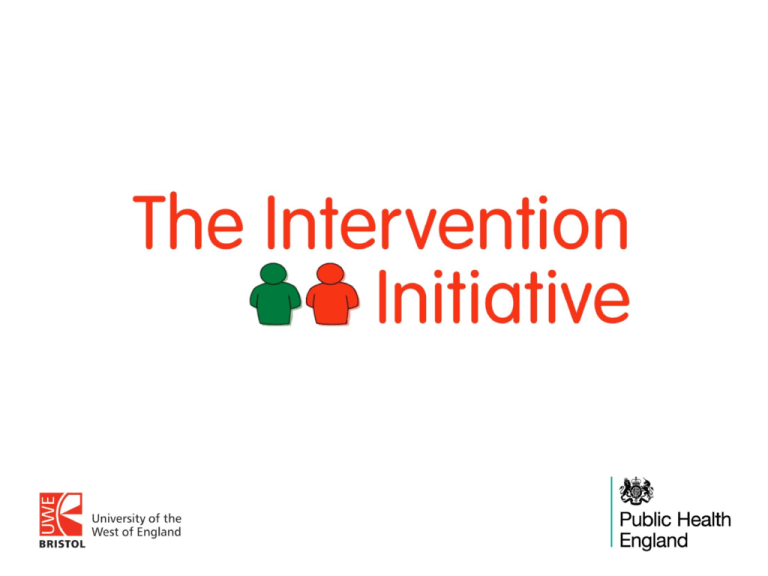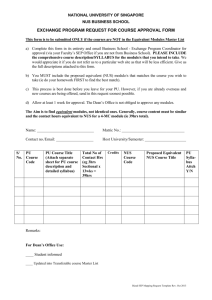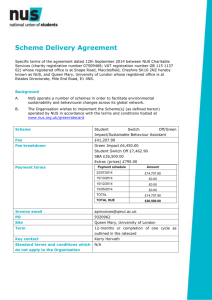
Session Two
Healthy, Positive Social Norms
• We will be learning and working together as a group in this programme
• Some of the material we will be discussing will be sensitive and some of us
will have had personal experience of the things we discuss
• We will all be be respectful of personal emotions as we learn
Some ground rules
•
•
•
•
Confidentiality
Appropriate language
Attendance
Communicating with the facilitator
Please be aware that we will be talking about sensitive issues and issues
that might have affected you or people you care about. If you feel
uncomfortable or upset it is fine to leave the space. Facilitators will
understand and are trained to help you.
Where we are
Healthy &
Positive
Behaviour
(Majority)
Problematic
Behaviour
Unacceptable
Behaviour
(Minority)
But from the
perspective of those
in the minority –
they believe they are
in the majority (false
consensus) and that
their behaviour is not
unacceptable
Acceptable/
majority
behaviour
Where we need to get to
Healthy &
positive
majority
behaviour
Unacceptable
behaviour
becomes SO
socially
proscribed
(clearly defined as
unacceptable)
that most people
stop doing it
Range of Behaviours
Healthy, age-appropriate, mutually respectful, safe
Mutually flirtatious, playful
Situation- or age-inappropriate or non-mutual
Harassment
Sexually abusive & violent
Adapted from Cordelia Anderson via Tabachnick, J. (2010). Making a Difference: Your role
in preventing sexual violence on campus. NSRVC.org/saam
How can we help to alter behaviour?
?
Not
cool
Don’t
be an
arse
Not
okay
You’re
better that
that
This is making
me
uncomfortable
A student’s personal experience
“I was approached by a group of male students as
I was walking out of my halls of residence and they
were all shouting sexual things at me and then one
of them approached me, grabbed me around the
waist and then started to touch my breasts and
bottom. He was saying things like ‘you know you
want this’ and ‘you know you're up for this’.”
NUS (2011) p13
Do you empathise?
If this had happened to…
•
•
•
•
•
Your best friend
Your girlfriend
Your mother
Your sister
Your daughter
IMPACT (of rape, attempted rape, sexual assault, sexual harassment)
“Throughout the ordeal, I was having nightmares, was afraid to go
anywhere outside of my room, had splitting headaches and was on a
course of Beta blockers and antidepressants. This seriously affected my
relationships further into uni and screwed up my first year exams”
(Cambridge 2014 p20)
“After the attempted
rape, I thought I was fine.
I got with every boy, but
would freak if they
touched me down there.
I would get drunk every
night. I drew away from
my friends. I got addicted
to prescription drugs. I
contemplated suicide. It
took me a year and a half
to realise I needed help.”
(Cambridge 2014 p20)
“I find it difficult to go on dates with men
without being wary of their intentions”
(NUS 2011 p28)
“It is playing a massive part in my life. I won’t
go out alone after dark any more, which, as a
part time student, is seriously affecting my
studies and personal and social choices. It is
also affecting me financially as I will take any
possible precautions so as not to be alone in
my local area in the dark. I’m taking antianxiety medication for the first time because
of it and I feel like it’s slowly destroying me”
(NUS 2011 p28)
A student’s personal experience
“I was approached by a group of male students as
I was walking out of my halls of residence and they
were all shouting sexual things at me and then one
of them approached me, grabbed me around the
waist and then started to touch my breasts and
bottom. He was saying things like ‘you know you
want this’ and ‘you know you're up for this’.”
NUS 2011 p13
Cambridge study: CUSU (Cambridge University Students' Union) (2014). Cambridge Speaks Out.
Cambridge: CUSU Women's Campaign. Online at
http://www.womens.cusu.cam.ac.uk/Cambridge%20Speaks%20Out%20Report%202014.pdf
NUS study: NUS (National Union of Students) (2011) (2nd Ed.). Hidden Marks. London: NUS. Online at
http://www.nus.org.uk/Global/NUS_hidden_marks_report_2nd_edition_web.pdf
• A group of students (not an individual)
• All shouting sexual things at me
• One of them takes it further
“Lad Culture”?
On Friday night at
Syndicate a young
female fresher
passed out about
1am. Nobody
moved to help her
get up but four
boys crowded
around taking
upskirt photos.
Freshers’ week at Bristol
University September
2013 via Facebook
Aberystwyth University men's
cricket club (AUMCC) social
last year. The team were
banned from playing and had
their funding withdrawn.
A rugby club at
Oxford University has
been banned from
competing and had
its leadership
dismissed after
organising a "free
pussy" event, which
instructed students
to spike their dates'
drinks.
Huffpo, 5/11/13
“Lad Culture”
The Independent, 6/10/2014
Government orders inquiry
over violence against
women at universities
The Guardian 6/9/15
Edinburgh rugby
players chant rape
jokes at female
students
Boozed-up rugby players
yelled jokes about “gang
rape” at female students
in the queue outside
Edinburgh Students’
Union on Saturday night.
The Tab, 25/09/2014
The Times Higher Education Supplement, 8/3/2013
Aberystwyth
University men's
cricket club
(AUMCC) social last
year
The Independent, 15/11/2013
‘I found photos of me in pyjamas
in my bed on some boys’
WhatsApp group,’ student Rosie
Wilcox says. ‘They did the same
to one of my friends and she
wasn’t wearing anything… They
thought it was really funny but
she was devastated’.
The Guardian: “Campus
Nightmare”, 11/10/2014
Being a “lad”
• Not all men
• Not “all the time”
• Not “all bad”
• There is pressure to conform
• From Oxford Good Lads Project
• http://youtu.be/PrnC9qr_gjY
Healthy &
Positive
Behaviour
(Majority)
Problematic
Behaviour Unacceptable
Behaviour
(Minority)
“We are Man”
http://www.youtube.com/watch?v=ZYhaodU
PqSU
“But what’s the problem with a
bit of harmless banter? It’s only
a joke”
• http://bobnational.net/record/220105/medi
a_id/221303
Blurred Lines: The New Battle of the Sexes [television programme, online] 21:30
8/5/2014, BBC TWO, 60mins. http://bobnational.net/record/220105/media_id/221303
Bonding as a
group
Verbal
harassment
Sexual
assault
HOMICIDE
SUICIDE
PHYSICAL EXPRESSION:
PHYSICAL/SEXUAL ASSAULT
See handout
VERBAL EXPRESSION:
SEXUAL HARASSMENT
MAKING SEXUAL JOKES
CULTURAL MICROAGGRESSIONS
(SUBTLE, INTENTIONAL OR UNINTENTIONAL): CULTURAL
INVISIBILITY, SOCIAL EXCLUSION, MISPREPRESENTATION,
VIOLENT PORN
ATTITUDES & BELIEFS:
RACISM SEXISM HOMOPHOBIA
TRANSPHOBIA DISABLISM AGEISM
Ideas incorporated from ccasayourworld.com; McMahon & Banyard, 2012 DOI: 10.1177/1524838011426015
Being a Man?
“You have to show how masculine you
are; you can’t show sensitivity – it is
difficult to be different – you need to
look and act a certain way”
(young man, Year 11: EVAW: A Different World is Possible, p.6)
EVAW (End Violence Against Women Coalition) (2011). A Different World Is Possible. London: EVAW.
ISBN: 978-0-9558609-3-5 Downloaded from
http://www.endviolenceagainstwomen.org.uk/data/files/resources/19/a_different_world_is_possible_report_e
mail_version.pdf
Being a Man?
+ risk of substance abuse
+ high-risk behaviours (proving toughness; not seeking medical help)
+ criminality
+ suicide
+ experiencing violence
+ exclusion from school & underachieving at school
+ being incarcerated in prison
(Pease, 2003, Thompson, 1995,1997)
Credit: Dr Finn Mackay
Social norm misperceptions among women
Healthy eating
& exercise
behaviours
Unhealthy
eating /
dieting /
exercise
Illness; eating
& exercise
disorders
Research shows:
“Men … report that they do not personally
believe in many societal myths about masculinity
but believe that other men do”
(Fabiano et al., 2003)
Men often underestimate the extent to which
other men are uncomfortable with stereotypical
(negative) masculine behaviour
(studies cited in Berkowitz, 2013)
Fabiano, P. M., Perkins, H. W., Berkowitz, A., Linkenbach, J., & Stark, C. (2003). Engaging men as social justice allies in ending
violence against women: Evidence for a social norms approach. Journal of American College Health, 52(3), 105-112.
Berkowitz, A. (2013). A Grassroots’ Guide to Fostering Healthy Norms to Reduce Violence in our
Communities:Social Norms Toolkit. USA: CDC. Online at
http://www.alanberkowitz.com/Social_Norms_Violence_Prevention_Toolkit.pdf
***
!!!
***
I’m
uncomfortable
but I’m the
only one
Don’t say
stuff like
that.







